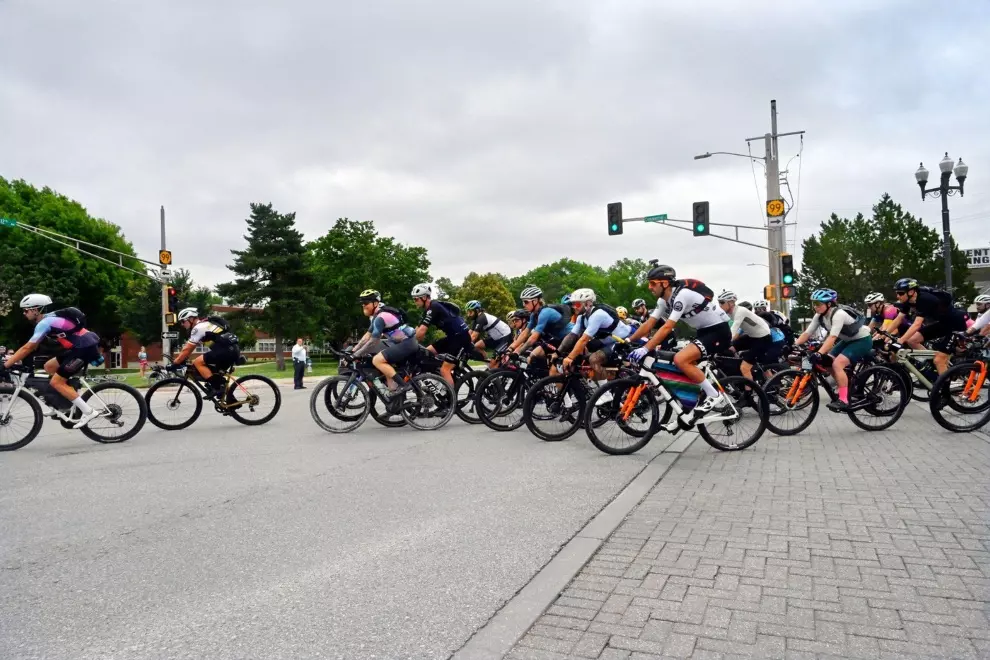They called themselves Klunkerz after those vintage bikes they used to push up to the top of the hill in order to rush down as fast as possible. It was in the late 60s, long before the first commercial mountain bikes were to be assembled, when a handful of hippie enthusiasts from the Northern San Francisco dug the pre-war cruiser bikes out of their cellars, stripped the unnecessary parts and replaced them with some new components that would withstand rough treatment on dirt roads leading from the top of Mt. Tamalpais down the valley.

Besides heavy drum brakes that had to be greased after every ride, the bikes were additionally equipped with sturdy motorcycle handlebars that made it down intact even after experiencing countless hits from all the rocks and holes on the trail. Such layout set a standard for the first mountain bikes that were designed by legendary MTB pioneers like Joe Breeze, Gary Fisher, Charlie Kelly or Tom Ritchey. Disregarding weight issues whatsoever, the main purpose of the original MTB handlebars was to survive crazy downhill rides where common handlebars would crack apart and send the rider off the bike nose first.
https://www.instagram.com/p/B-xmXRRhScH/
When MTB racing became a serious thing in the late 80s and early 90s and the National Off-Road Bicycle Association launched some of the first official events in the USA, the bikes got several improvements to make them lighter and faster. The bikes at that time resembled our contemporary machines in many ways yet the details were still quite different. Besides frames with geometry allowing more efficient pedalling, the new racing bikes featured two kinds of handlebars. Even though most professionals opted for narrow and flat handlebars, a few riders preferred regular drop bars adopted from road cycling. One of them was invincible all-rounder John Tomac who was able to simultaneously excel in different disciplines. While even in XC drop bars were rare, in DH they were regarded as unstable, dangerous and difficult to steer. It didn’t stop Tomac, though, to race with them even on the high-speed Kamikaze downhill at Mammoth Mountain and win it in 1990.
Narrow and flat handlebars were more convenient among riders back in the day, though. It was quite usual to have their ends fitted with a pair of bar ends. While the low and rather forward position allowed riders to put the weight onto hands and control the traction of the front wheel, bar ends resembling two horns poking out on both sides of the handlebars enabled to vary the type of grip and posture during the ride. Since bar ends increased leverage, they were especially effective when climbing out of the saddle. The neutral position of the hands with palms facing inward improved comfort and contributed to the mass popularity of said handlebars among riders in the early 1990s. The bar ends were produced in different shapes and colours, some of them smoothly bent like cow horns while others were angled and looked rather like door handles. Eventually ending up as ridiculous imagery, they died out completely at the end of the 90s when flat bars with bar ends were massively replaced by riser bars.
https://www.instagram.com/p/B8_lAcfBmN5/
Riser bars made their breakthrough in DH races where they were introduced by young progressive riders originally coming from BMX. As downhill became more and more technically demanding, some elements common in BMX found their way to the DH tracks including flat platform pedals, seats dropped down to the top frame tube level, and riser bars that often featured a cross brace to provide rigidity and strength. While cross braces are lost in time, the signature shape with two bends – one up and one back – has remained and has become the standard for any type of bike ranging from XC to DH racing.
They are designed to provide riders with a more natural position for the hands and more comfortable grip. While a few years ago anything over 700 mm was laughably odd, this season we witnessed many UCI DH riders sporting 800+ mm wide handlebars. ‘The wider, the better’ is the latest trend as wide handlebars with bigger leverage offer more control, easier bracing and better positioning for balance. In theory, they help to spread bodyweight better over the front wheel. With wider handlebars, steering inputs require less force – imagine yourself pushing a barrel with your hands spread further apart compared to having them close together. What works better? As the answer is clear, you might already know exactly what to buy before this season starts.




